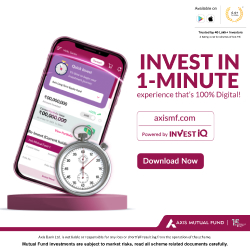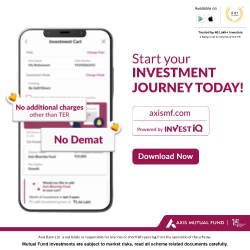Lenskart Business Model: How Lenskart Makes Money and Dominates the Eyewear Industry
Competitors in the Eyewear Market While Lenskart has enjoyed tremendous success, it faces stiff competition from several notable players: Titan Eye Plus: W
- by B2B Desk 2025-02-07 10:47:03
Did you know that over 4 billion people around the world wear glasses, and nearly 64% of adults use them for vision correction? When it comes to eyewear in India, Lenskart is a name that immediately comes to mind. More than just a brand, Lenskart has become a household name for quality eyewear. In this article, we’ll take a closer look at the Lenskart business model, exploring how the company makes money, its journey from a startup to an industry leader, and the strategies that set it apart.
Introduction
How Lenskart Was Founded
Imagine India in 2010—a market dominated by local opticians and a largely unorganized eyewear sector. Branded spectacles were virtually unheard of. It was in this chaotic scenario that Peyush Bansal, a former Microsoft employee with no prior experience in the eyewear business, decided to make a mark. After a successful stint with SearchMyCampus and a US-based venture called Flyrr.com, Peyush saw an opportunity in India’s untapped eyewear market.
In November 2010, Peyush, along with co-founders Sumeet Kapahi, Amit Chaudhary, and Ramneek Khurana, launched Lenskart with a simple mission: to make quality eyewear affordable and accessible to everyone. By addressing the inefficiencies and limited options in the traditional market, they set out to create a brand that would soon become synonymous with innovation in the eyewear space.
Where Lenskart Stands Today
Fast forward to today, and Lenskart has firmly established itself as the leader in India’s eyewear market. With over 2,000 stores spread across more than 300 cities, Lenskart has built a robust omnichannel presence that combines the convenience of online shopping with the personalized service of offline stores.
One striking example of Lenskart’s growth is its manufacturing capability. Their New Delhi factory churns out approximately 300,000 glasses per month. Furthermore, an automated factory in Bhiwadi, Rajasthan, is set to ramp up production to an astonishing 5 crore glasses a year. Such numbers reflect not only the brand’s immense popularity but also its strategic vision to scale operations and meet the growing demand.
Competitors in the Eyewear Market
- Titan Eye Plus: With over 860 stores nationwide, Titan Eye Plus is a key competitor, emphasizing in-store experiences over online sales. Despite its extensive reach, only about 10% of its sales come from online channels.
- Vision Express: Known for its blend of eyewear and comprehensive eye care, Vision Express operates over 160 stores in India, backed by international standards.
- Specsmaker: Dominating the South Indian market with around 300 stores, Specsmaker has a strong regional presence and is poised for further expansion.
- Clear Dekho: This brand targets smaller cities with an innovative online-to-offline (O2O) model, aiming to empower local opticians.
- EyeMyEye: A newer entrant, EyeMyEye primarily operates online and has quickly captured a significant audience with its modern approach.
Main USPs of Lenskart
Lenskart’s unique selling propositions (USPs) are the backbone of its success. Here are some of the key features that set Lenskart apart:
- Omni-Channel Convenience: Lenskart provides a unified shopping experience—whether you prefer to browse online, visit a physical store, or get an eye exam at home.
- Customization and Technology: The virtual try-on feature lets customers see how different frames suit them before making a purchase. This personalization adds a modern twist to traditional shopping.
- Quality and Affordability: With a 14-day return policy and rigorous quality checks, Lenskart ensures customer satisfaction without compromising on style or durability.
- Wide Product Range: Offering over 5,000 frame styles and 45+ lens types, Lenskart caters to diverse customer needs, from prescription eyewear to fashionable sunglasses.
How Lenskart Makes Money
1. Sale of Goods
The vast majority of Lenskart’s revenue—approximately 95%—comes from selling eyewear. This includes:
- Prescription Eyewear: Lenskart sells frames and lenses designed for vision correction. This category encompasses various types of lenses, such as single-vision, bifocal, and progressive lenses.
- Non-Prescription Products: In addition to prescription eyewear, Lenskart offers a range of non-prescription products, including fashion sunglasses and other accessories like lens cases and eyewear chains.
- Contact Lenses and Specialty Lenses: With a diverse array of options, Lenskart also caters to customers who prefer contact lenses or specialized screen lenses designed to reduce eye strain.
Lenskart supplements its product sales with various service offerings, such as:
- Lenskart Gold Membership: This subscription-based service, priced at around INR 500 per year, provides members with benefits like free eye tests and exclusive offers.
- Home Eye Check-Ups: For a nominal fee of INR 99, customers can avail themselves of at-home eye examinations conducted by certified professionals.
- Training Programs: Lenskart Academy offers specialized training for optometrists, sales staff, and franchise partners, ensuring consistent quality across all service touchpoints.
- Franchise Model: By licensing its brand to franchisees, Lenskart expands its physical presence across India and even internationally. Franchisees contribute through upfront fees and revenue sharing, which further bolsters the company’s income.
Lenskart Financials FY24
Let’s take a quick look at Lenskart’s financial performance over recent years. The following table summarizes key metrics:
|
Financial Metric |
2022 |
2023 |
2024 |
|
Operating Revenue |
INR 1502 crore |
INR 3788 crore |
INR 5610 crore |
|
Total Expenses |
INR 1726 crore |
INR 4025 crore |
INR 5550 crore |
|
Profit/Loss |
INR -102 crore |
INR -64 crore |
INR -10 crore |
Note: Figures are based on available FY reports and demonstrate Lenskart’s steady growth in operating revenue despite initial losses.
The Omni-Channel Approach
Today, Lenskart seamlessly integrates its online platform with physical stores and even home services. This approach not only broadens the customer base but also enhances brand loyalty by providing multiple touchpoints for customer engagement.
Growth Drivers for Lenskart
Lenskart’s success isn’t by chance—it’s driven by a combination of innovative marketing strategies and customer-friendly initiatives. Key growth drivers include:
- “First Frame is Free” Offer: This initiative attracts first-time buyers by reducing the perceived risk of trying out new eyewear.
- “Try at Home” Program: Allowing customers to try up to five frames at home increases engagement and conversion rates.
- 3D Facial Visualizer: This technology helps customers choose frames that suit their face shape, enhancing the shopping experience.
- Personalized Customer Service: From live chat support to in-store assistance, Lenskart ensures that every customer feels valued.
- Expanding Franchise Network: With over 1,500 stores across India, Singapore, and Dubai, Lenskart’s franchise model continues to drive regional growth and brand expansion.
Conclusion
Lenskart has truly redefined the eyewear market in India. With its innovative business model, the company has transformed a fragmented industry into a highly organized and customer-centric market. By combining a wide range of products with exceptional service and leveraging an omni-channel strategy, Lenskart not only meets the needs of modern consumers but also paves the way for future growth.
Understanding the Lenskart Business Model reveals a company that is as committed to quality as it is to innovation. Whether through the sale of prescription eyewear, non-prescription accessories, or value-added services like home eye check-ups and specialized training, Lenskart continues to build a legacy based on customer satisfaction and technological excellence.
As Lenskart expands its reach both online and offline, it remains a prime example of how a focused business model and customer-first philosophy can disrupt traditional markets. For anyone looking to understand how a successful startup evolves into a market leader, Lenskart offers a roadmap worth following.
Here’s to clearer vision and smarter business strategies—Lenskart is not just selling glasses; it’s redefining the way we see the world.
Also Read: From Seed to Scale: Understanding the 7 Startup Funding Stages
POPULAR POSTS
Pine Labs IPO 2025: Listing Date, Grey Market Premium, and Expert Outlook
by Shan, 2025-11-05 09:57:07
India’s Largest Unicorn Startups in 2025: Rankings, Valuations, and Trends
by Shan, 2025-09-18 10:32:48
Swiggy Launches Toing App in Pune to Serve Affordable Food Delivery — What It Means for the Market
by Shan, 2025-09-16 12:29:08
Trending Startup Ideas for 2025: Where Innovation Meets Opportunity
by Shan, 2025-09-05 11:56:43
19 Best Business Ideas to Start in India 2025: From Low Investment to High Demand
by Shan, 2025-09-03 10:58:15
Razorpay Business Model Explained: How the Fintech Giant Makes Money in India
by Shan, 2025-08-05 12:10:28
How CRED Reimagined Credit Card Rewards into a Billion-Dollar Fintech Empire
by Shan, 2025-08-04 12:28:03
RECENTLY PUBLISHED

Loan EMIs to Drop as RBI Slashes Repo Rate - Full MPC December 2025 Highlights
- by Shan, 2025-12-05 11:49:44

The Agentic Revolution: Why Salesforce Is Betting Its Future on AI Agents
- by Shan, 2025-11-05 10:29:23

Top 10 Insurance Companies in India 2026: Life, Health, and General Insurance Leaders Explained
- by Shan, 2025-10-30 10:06:42

OpenAI Offers ChatGPT Go Free in India: What’s Behind This Big AI Giveaway?
- by Shan, 2025-10-28 12:19:11

Best Silver Investment Platforms for 2025: From CFDs to Digital Vaults Explained
- by Shan, 2025-10-23 12:22:46


.png)



 Subscribe now
Subscribe now 